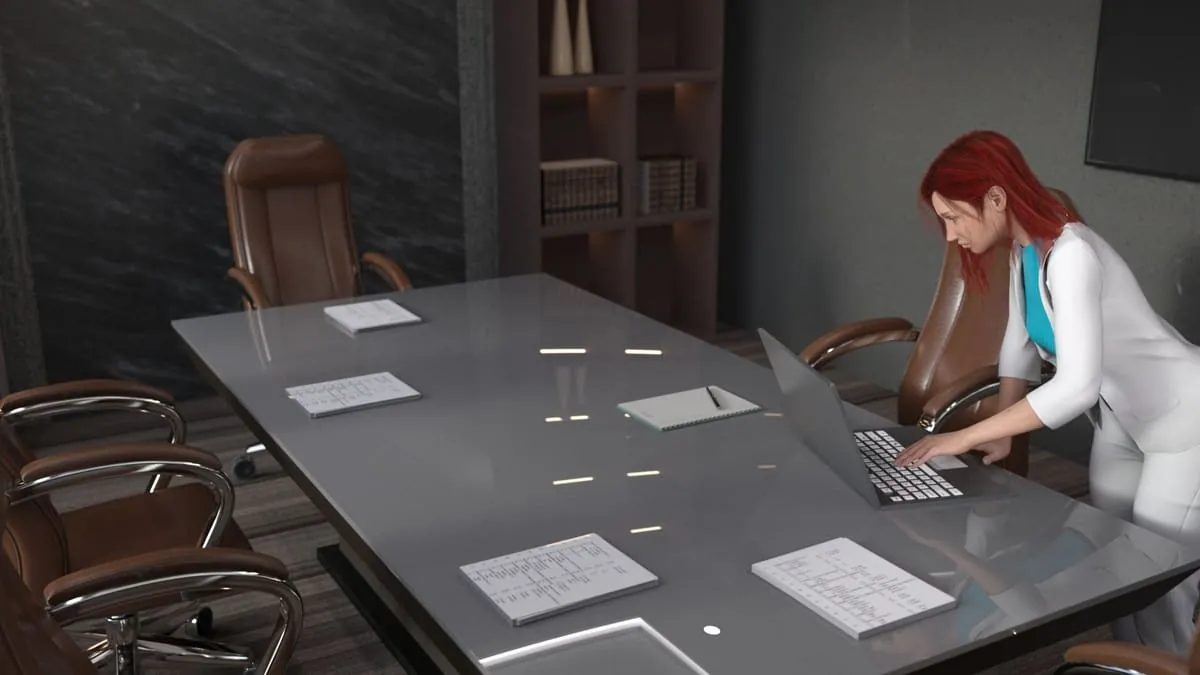
Corporate Culture
Play Corporate Culture
Corporate Culture review
Exploring the unique gameplay and themes of ‘Corporate Culture’ game
The game ‘Corporate Culture’ offers a distinctive experience that blends narrative-driven gameplay with immersive character interactions. This article explores the core elements of ‘Corporate Culture,’ diving into its storyline, mechanics, and what makes it stand out in its genre. Whether you’re curious about the game’s design or looking for tips to enhance your playthrough, this guide covers everything you need to know about ‘Corporate Culture.’
Exploring the Gameplay and Storyline of ‘Corporate Culture’
Ever walked into an office on your first day and felt that peculiar mix of excitement and sheer, unadulterated terror? 😅 That’s the exact feeling ‘Corporate Culture’ captures from the moment you hit ‘New Game’. You’re not just playing a character; you’re stepping into their polished, slightly uncomfortable shoes, ready to navigate a world of watercooler gossip, ambitious projects, and morally ambiguous managers. This game is a brilliant, satirical mirror held up to modern office life, and it’s an experience that’s both hilariously relatable and deeply strategic.
My first hour with the game was a masterclass in anxiety. I remember carefully choosing my first-day outfit, worried it would signal the wrong thing, and then immediately being cornered by a overly cheerful colleague who wanted to know “my thoughts on the new TPS report cover sheets.” I panicked, gave a non-committal answer, and instantly saw a notification: “Relationship with ‘Brenda from Marketing’ has decreased.” I was hooked. This is the magic of the Corporate Culture game overview—it’s a world that feels alive, reactive, and packed with personality.
### What is the premise of ‘Corporate Culture’?
At its heart, the Corporate Culture storyline is about survival and ambition. You play as a new hire at the monolithic, and vaguely sinister, OmniCorp. Your goal isn’t just to climb the corporate ladder; it’s to navigate the unspoken rules, complex social hierarchies, and political landmines that define each day. 🏢 The setting is a beautifully rendered, endlessly looping office floor that becomes a character in itself—from the buzzing fluorescent lights to the beige cubicle farms that slowly feel more like a prison.
The main characters you meet are archetypes we all recognize, but written with surprising depth. There’s the micromanaging boss who lives for spreadsheets, the sycophantic “teacher’s pet” angling for a promotion, the jaded veteran who’s seen it all, and the idealistic newbie who still believes in the company mission. The narrative style in Corporate Culture is a key driver. It’s not delivered through long cutscenes but through environmental storytelling, snippets of overheard conversations, a mountain of passive-aggressive emails, and text-based dialogue trees where every word matters.
The genius of the narrative style in Corporate Culture is its subtlety. You’ll piece together office dramas from Post-it notes left on monitors or deduce your boss’s bad mood from the way they’re clacking their keyboard just a little too loudly. It’s a story you actively uncover, making your role feel incredibly immersive.
### How does the gameplay unfold?
If you’re wondering how to play Corporate Culture, forget everything you know about combat-based games. Your primary weapons are dialogue choices, time management, and social strategy. The core loop is brilliantly simple: each in-game day, you have a set amount of Energy and Focus. You must choose how to spend these resources on tasks, social interactions, or personal actions (like grabbing coffee to boost your stats).
The Corporate Culture gameplay mechanics are built on a foundation of choice and consequence. Every interaction is a potential branching path.
- Talk to a colleague: You can choose to gossip, compliment, pry for information, or shut them down. Each choice affects your relationship with them and how others perceive you.
- Complete a task: You can do the bare minimum, go above and beyond, or even sabotage it subtly to make a rival look bad. Completing tasks well earns you “Performance Points” for promotions.
- Manage your stats: Your Stress, Energy, and Likeability meters are constantly in flux. Ignore your Stress, and your productivity plummets. Neglect your Likeability, and no one will help you when you need it.
A typical day might look like this: You start by checking your email (a mini-game in itself, filtering urgent requests from corporate spam). You then decide to help a struggling coworker, sacrificing your own productivity to gain a powerful ally. Later, your manager demands you stay late to finish a report. Do you comply, boosting your standing with them but increasing your Stress? Or do you make an excuse, preserving your well-being but risking their wrath? There is no “right” answer, only a web of outcomes.
The progression system is tied to your job title. As you get promoted, you gain new abilities, like delegating work or accessing secure files, but the challenges and political games become even more complex. Understanding these Corporate Culture gameplay mechanics is crucial for long-term success.
Here’s a breakdown of the core resources you must manage:
| Resource | What It Does | How to Replenish It |
|---|---|---|
| Energy | Required to perform any action (talking, working, etc.). | Drinking coffee, taking a break, going home for the day. |
| Focus | Determines the quality and speed of task completion. | Working in a quiet space, avoiding distractions. |
| Social Capital | Your standing with colleagues. Needed to ask for favors. | Positive interactions, helping others, gossiping. |
| Stress | If too high, it reduces Focus and Energy regeneration. | Taking walks, venting to a trusted colleague, going home. |
### What unique features set ‘Corporate Culture’ apart?
This isn’t just another management sim. Several unique features of Corporate Culture make it a standout title. First is its distinct art style. It uses a stark, almost minimalist color palette dominated by greys, blues, and beiges, which perfectly captures the soul-crushing aesthetics of a cubicle farm. Yet, character portraits are expressive and animated, bursting with personality that contrasts with their dull surroundings. It’s a visual metaphor for the people trapped within the system. 🎨
The most important lesson I learned? Sometimes, the most powerful move is to do nothing at all. Listening can be a better strategy than talking.
But the true star is the depth of character interaction in Corporate Culture. These aren’t just quest-givers; they have their own schedules, relationships with each other, and hidden agendas. If you befriend someone in accounting, they might later “lose” an expense report for your rival. If you anger the IT guy, your computer might “coincidentally” crash before a big deadline. The social web is incredibly dynamic.
This leads to the most innovative feature: the narrative legacy of your actions. Early on, I had to decide whether to take credit for a team project or name-drop my colleagues. I chose to share the credit. Weeks later (in game time), when I was competing for a promotion, one of those colleagues went to bat for me in a meeting I wasn’t even in, securing me the role. The game remembers everything*.
A detailed example of a player decision impacting the storyline: In my second week, my manager, Susan, asked me to compile a report that would ultimately be used to justify downsizing our department. She presented it as a simple data entry job.
* Option A: Complete the report efficiently, earning a big performance bonus and Susan’s trust.
* Option B: Deliberately do a poor job, making the data unusable and protecting my colleagues’ jobs, but angering Susan.
* Option C: Secretly make a copy of the report and leak it anonymously to the entire department, causing widespread panic and making Susan look incompetent.
I chose Option C. The result was immediate chaos. Morale plummeted, productivity halted, and Susan was called into a meeting with upper management. For the next in-game month, the office was a tense, paranoid place. Trust was broken, and new dialogue options opened up where I could either stoke the fires of rebellion or try to play peacemaker. This one decision fundamentally altered the trajectory of my entire playthrough, showcasing the incredible weight of your choices.
For new players wondering how to play Corporate Culture effectively, my advice is simple: listen more than you talk. Your first playthrough should be about observation. Learn who holds power, who gossips, and who is trustworthy. Save your game often—not because you might “lose,” but because you’ll want to go back and see how a different choice plays out. And never, ever forget to get coffee. ☕
The Corporate Culture game overview wouldn’t be complete without acknowledging its sharp wit and unsettling accuracy. It’s a game that makes you laugh, then pause, and then look around your own office with a new, more suspicious eye. It’s a masterclass in blending gameplay with narrative, proving that the most compelling conflicts aren’t fought with swords, but with spreadsheets and strategically worded emails.
In summary, ‘Corporate Culture’ offers a compelling blend of narrative depth and interactive gameplay that invites players to immerse themselves in its unique world. From its engaging storyline to its distinctive mechanics, the game provides an experience that is both entertaining and thought-provoking. Whether you’re a newcomer or looking to deepen your understanding, exploring ‘Corporate Culture’ can be a rewarding journey. Ready to dive in? Start your adventure today and discover what makes this game truly special.


























